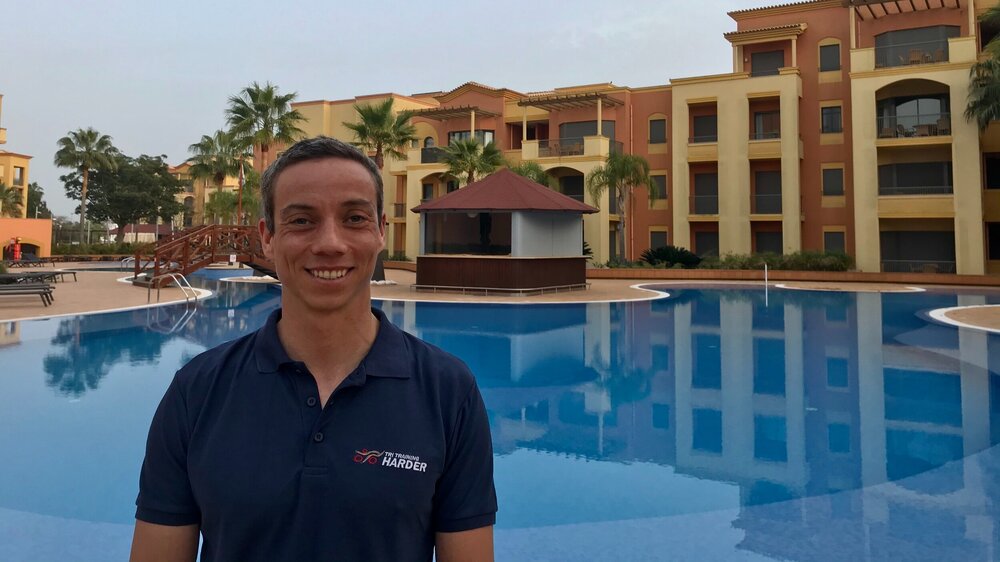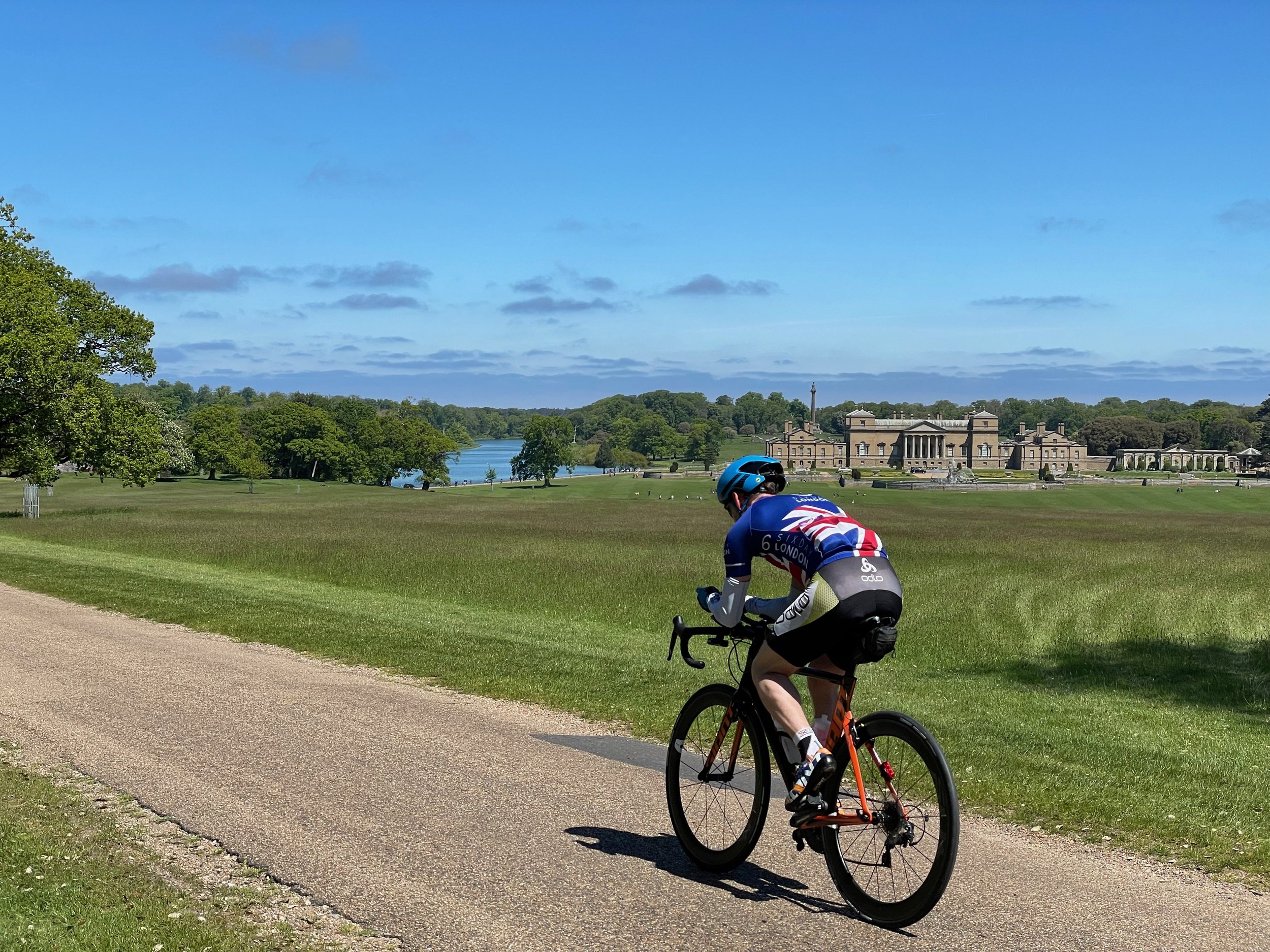Sweat Testing – Fluid Loss
In this two-part blog, Coach Jon Reilly investigates sweat testing: what is it, how does it work and do you need to do it? The first part looks at fluid loss, and the second one at sodium loss. Let’s find out more.
Firstly, what is sweat?
Sweat is a fluid produced by glands in the skin to help regulate body temperature. When exercising, muscles generate heat. This rise in temperature triggers sweat production; sweat lowers the body temperature through evaporation- as the sweat evaporates, heat is taken away from the body.
Two elements of sweat production are essential to understand:
Sweat rate - how much fluid we lose when we sweat in different conditions.
Sweat sodium concentration - sweat contains several electrolytes, with sodium being the most important for hydration and sporting performance. Sodium helps you absorb and retain fluid in your blood. Knowing how much sodium your sweat contains can help guide your hydration and electrolyte needs during exercise.
Sporting performance can be hampered when you are sweating for prolonged periods without rehydrating adequately - excessive losses of water and sodium can cause your blood volume to reduce, increasing cardiovascular strain and energy expenditure, causing performance degradation. There can be considerable differences in both sweat rate and sweat sodium concentrations from athlete to athlete. Some barely sweat, others sweat a lot, but they lose very little sodium in their sweat, and some have a high sweat rate and a high sodium sweat concentration. Therefore, understanding more about how your body sweats during exercise can help you tailor your hydration and fueling needs to replace your losses during endurance training and racing. Everyone is different, so what works for someone else more than likely won’t work for you. Testing is the best way to find out what your body needs.
Sweat Rate testing
There are methods of testing sweat rate and composition precisely in a lab environment. However, most age-group athletes will benefit from simply carrying out a few tests at home with a set of bathroom scales.
To calculate your sweat rate, we want to know how many litres of fluid is being lost by your body per hour. Sweat rates tend to range from 0.5 litres per hour to over 2.5 litres per hour; anything around 1-1.5L/hr is considered a ‘normal’ sweat rate during exercise.
To perform your sweat rate test - note your bodyweight (naked) before and immediately after a training session. By subtracting your weight post-exercise from your pre-exercise weight, you will be able to see how much fluid you have lost. You also need to weigh your water bottles before and after the session and take note of any bathroom breaks. You can then use this as a guide as to how much fluid you lose per hour.
Many things affect your sweat rate; temperature, humidity, wind speed, clothing, effort level etc. To build an accurate picture you need to do several measurements in different conditions: indoor / outdoor / hot-day / cool-day / high-intensity / low-intensity for both cycling and running. The more testing you can do, the better you will predict your sweat rates for different race conditions.
As well as varying in different conditions, your sweat rate can change slightly over time. It can change as your fitness level changes; if you get fitter, you will sweat more. If you have drastic changes in body composition, your sweat rate will change; larger muscles produce more heat, so more sweat is required for cooling. If you undertake a heat acclimatisation protocol or move to a new environment; a different climate or altitude, your sweat rate will adjust to the new conditions by 10-20%. Therefore, if you want to be accurate, it may be worth re-testing your sweat rate if you have any major changes like these.
This at-home method of sweat rate testing is not as accurate as lab testing methods. As well as the potential inaccuracies in the weighing process, the accuracy of your test results may start to be affected during longer sessions by metabolic mass loss (burning calories) and respiratory water loss (all that huffing and puffing). However, this DIY test should give you a good idea of the quantities of fluid you are likely to lose in your training sessions and events.
For more information on how to perform your sweat rate testing check out Asker Jeukendrup’s sweat rate calculator or Precision Fuel and Hydration’s sweat rate calculator.
Read the next article on sodium loss to continue finding out about sweat testing.

Jon has been coaching with his local triathlon club in Hertfordshire around his full-time job as an airline pilot for several years. Unfortunately, Jon lost his pilot’s licence for 11 months in 2019 due to being diagnosed with testicular cancer (read his story here). He used the time off from flying to complete his Level 2 and Level 2 BTF diploma qualifications as well as a L3 Personal Trainer qualification. With his new coaching qualifications under his belt, Jon was able to join Tri Training Harder as a coach in 2019. He has now recovered from cancer, started flying again and is training hard for the coming triathlon season.
Jon has a flexible approach to coaching and training, from his own busy lifestyle he knows how to balance training around family, friends and social commitments. Jon loves to utilise the knowledge gained on his Personal Trainer course and finds incorporating well-structured strength and conditioning sessions vital to triathlon performance.
Visit Jon's
Coach profile
We’re here to help
Tri Training Harder are one of the leading Triathlon coaching providers in the UK, using our wealth of experience to unite scientific and technological research with already well-established and successful best practices, to create a formula for triathlon and endurance coaching that works.
The result is an honest, dynamic, yet simple new way of constructing an athlete’s training to allow them to reach their potential.
If you’re planning your next season, just starting out in the sport or are looking for extra guidance at the very top end of the field, we are here to help, and our coaches would be delighted to hear from you. You can contact us via the website, and one of the team will be in touch.

